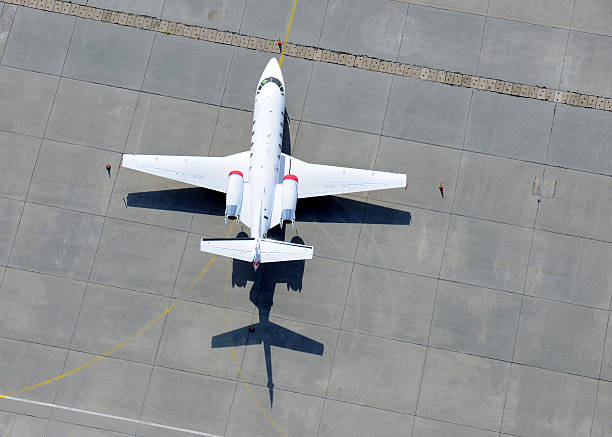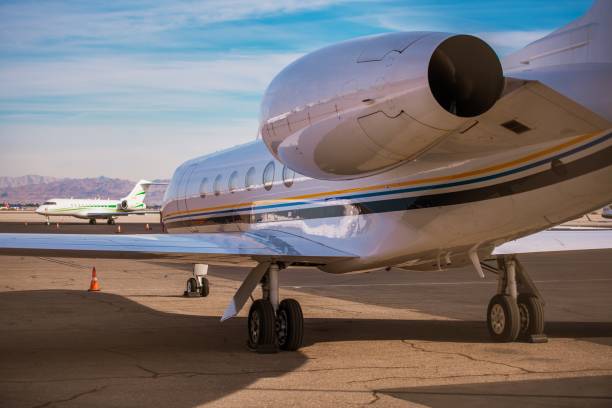Emergency Jet Charter Services in Los Angeles: A Critical Resource for Medical Professionals

When every second counts in medical emergencies, traditional transportation methods often fall short of the urgent demands facing healthcare providers. For medical professionals in Los Angeles, emergency jet charter services have become an indispensable tool for saving lives, facilitating critical patient transfers, and ensuring rapid response to medical crises across the globe. This comprehensive guide explores how emergency aviation services are revolutionizing medical care delivery and why they're essential for today's healthcare landscape.
The Growing Demand for Medical Aviation in Los Angeles
Los Angeles, as the second-largest metropolitan area in the United States with over 13 million residents, faces unique challenges in medical emergency response. The sprawling urban landscape, notorious traffic congestion, and diverse population create scenarios where traditional ground transportation simply cannot meet the urgency required for critical medical situations.
The Association of Air Medical Services (AAMS), established in 1980, is dedicated to advancing the art and science of transport medicine through advocacy, education, and research to ensure high-quality, life-saving care to patients and communities worldwide. The Los Angeles metropolitan area represents a significant portion of the nation's medical transport activity, highlighting the critical role emergency aviation plays in the region's healthcare infrastructure.
Understanding Emergency Jet Charter for Medical Purposes
Emergency jet charter services specifically designed for medical professionals encompass several distinct categories, all operating under strict federal oversight through FAA Part 135 certification, which grants the authority to operate on-demand, unscheduled air service and governs commercial aviation operations, specifically non-scheduled air carrier and commercial operator operations.
Air Ambulance Services
These specialized aircraft are equipped with advanced life support systems, allowing medical teams to provide continuous care during transport. Modern air ambulances feature:
- ICU-level medical equipment including ventilators, defibrillators, and cardiac monitors
- Pressurized cabins maintaining optimal conditions for patient care
- Specialized stretcher systems for patient stability
- Communication systems for real-time consultation with receiving hospitals
Medical Team Transport
When medical specialists need to reach remote locations or disaster areas quickly, charter jets provide the fastest transportation method. This service is particularly valuable for:
- Organ transplant teams racing against preservation time limits
- Trauma specialists responding to mass casualty incidents
- Infectious disease experts during outbreak situations
- Pediatric specialists for critical neonatal cases
Medical Equipment and Supply Transport
Emergency charters also transport time-sensitive medical supplies, including:
- Blood products and plasma
- Organs for transplantation
- Experimental treatments and medications
- Specialized medical devices
Key Advantages of Emergency Jet Charter Services
Speed and Efficiency
While specific time savings vary depending on route and conditions, better connectivity reduces travel time and that's important in time-sensitive cargo such as medical emergencies. Emergency charter jets can provide direct routing and faster response times compared to commercial alternatives, though exact time reductions depend on multiple factors including aircraft availability, weather conditions, and airport access.
24/7 Availability
Medical emergencies don't follow business hours. FAA Part 135 charter operators maintain round-the-clock operations with flight crews and aircraft ready for immediate deployment, establishing comprehensive safety standards that significantly exceed those for private aircraft operations. Most reputable services can coordinate aircraft deployment within hours of receiving a request, though response times vary based on aircraft positioning and availability.
Flexible Routing
Unlike commercial airlines limited to major airports, charter jets can access thousands of airports across the United States, including smaller regional facilities closer to rural hospitals or incident sites. This flexibility is particularly valuable when the time sensitivity of certain situations may dictate a need for helicopter transfer instead, given that the stakes are high when it comes to organ transplantation, requiring criteria about the trade-offs when opting for different aircraft types.
Specialized Medical Configuration
Charter aircraft can be rapidly reconfigured with medical equipment and personnel accommodations specific to each mission's requirements, ensuring optimal patient care during transport.
Critical Applications in Medical Practice
Organ Transportation
There are currently over 103,000 people on the national transplant waiting list, with 13 people dying each day waiting for an organ transplant. The urgency of organ transportation cannot be overstated, as the success of transplantation is largely dependent on the swift transportation of organs from donors to recipients, as Cold Ischemia Time (CIT) plays a critical role in determining the recipient's medical outcome.
Recent challenges with commercial transport have highlighted the need for specialized charter services. Over 170 kidneys have been lost in commercial air transportation in a five-year period, with about 370 near misses defined as a two-hour delay from the anticipated arrival of the organ. Emergency jet charters enable:
- Rapid organ procurement team deployment
- Expedited organ transportation between donor and recipient facilities
- Coordination of multiple transplant teams across different locations
Inter-hospital Transfers
Complex medical cases often require transfer to specialized facilities. Charter services facilitate:
- Transport of critically ill patients to tertiary care centers
- Movement of patients requiring specialized procedures unavailable locally
- Repatriation of patients injured while traveling abroad
Disaster Response
During natural disasters or mass casualty events, emergency charter services provide:
- Rapid deployment of medical response teams
- Patient evacuation from affected areas
- Transport of medical supplies to disaster zones
Los Angeles: A Strategic Hub for Medical Aviation
Los Angeles' geographic position makes it an ideal base for emergency medical charter operations. The city's proximity to major medical centers, research institutions, and diverse population centers creates unique advantages:
World-Class Medical Facilities
LA County hosts numerous hospitals, including renowned institutions such as:
- UCLA Medical Center, ranked No. 6 on the Best Hospitals Honor Roll and nationally ranked in 14 adult and 10 pediatric specialties
- Cedars-Sinai Medical Center, ranked No. 8 on the Best Hospitals Honor Roll and nationally ranked in 12 adult specialties
- Keck Medical Center of USC, ranked No. 16 on the Best Hospitals Honor Roll and nationally ranked in 9 adult specialties
- Children's Hospital Los Angeles
These facilities generate significant demand for emergency transport services, both inbound and outbound.
Aviation Infrastructure
The Los Angeles basin features multiple airports capable of handling medical charter operations:
- Los Angeles International Airport (LAX)
- Bob Hope Airport (Burbank)
- Long Beach Airport
- Van Nuys Airport
- John Wayne Airport (Orange County)
This infrastructure provides flexibility in aircraft positioning and reduces response times for medical emergencies.
Proximity to High-Risk Areas
Southern California's earthquake zones, wildfire-prone regions, and extensive highway system create ongoing demand for emergency medical response capabilities.
Regulatory Framework and Safety Standards
Emergency medical charter operations operate under strict federal oversight through FAA Part 135 certification, which provides clients with enhanced protection and peace of mind through superior safety standards, professional service, regulatory oversight, and operational reliability.
FAA Regulations
Pilots operating a Part 135 aircraft need to have at least 500 total flight hours, 100 hours of cross-country time and 25 hours at night. The Federal Aviation Administration requires medical charter operators to maintain:
- Part 135 operating certificates for on-demand charter flights
- Specialized training for medical mission crews
- Enhanced maintenance standards for aircraft used in medical operations
Medical Certification
Medical equipment and procedures aboard charter aircraft must comply with:
- FDA regulations for medical devices
- State medical licensing requirements for healthcare personnel
- HIPAA privacy protections for patient information
Insurance Requirements
Medical charter operators typically carry substantial liability coverage, providing protection for patients, medical personnel, and healthcare institutions involved in transport operations.
Working with Professional Charter Brokers
When medical emergencies arise, healthcare professionals need immediate access to qualified aircraft and crews. This is where professional air charter brokers play a crucial role. Air charter brokers are licensed aviation professionals who arrange flights on behalf of their charter clients with FAR Part 135 air carriers that exercise full operational control of charter flights at all times.
Professional charter brokers provide several key advantages:
Expert Guidance
Experienced brokers understand the complexities of medical transport and can quickly identify the most appropriate aircraft and crew for specific medical situations. They maintain relationships with multiple certified operators, ensuring access to suitable aircraft even during peak demand periods.
24/7 Availability
Medical emergencies don't follow schedules, and professional charter brokers maintain round-the-clock operations to respond immediately to urgent requests. 24/7 teams match clients with the best option—light jet, long-range, or helicopter—wherever the journey takes them.
Regulatory Compliance
Professional brokers ensure all flights operate under proper FAA certification and maintain compliance with medical transport regulations. This includes coordinating with certified operators who meet the stringent requirements for medical charter operations.
Cost Optimization
By working with multiple certified operators, brokers can often secure competitive pricing while maintaining quality standards. They understand the various factors that influence charter costs and can help medical facilities make informed decisions about transport options.
Cost Considerations and Financial Planning
While emergency jet charter services represent a significant investment, the costs must be weighed against potential outcomes and the critical nature of medical emergencies.
Pricing Structure
Emergency medical charter costs vary significantly based on multiple factors:
- Aircraft type and size requirements
- Distance traveled and routing complexity
- Medical equipment and staffing needs
- Ground support coordination
- Weather conditions and seasonal demand
Estimates suggest costs can range from $15,000 to $50,000 or more per flight, though exact pricing depends on specific mission requirements and current market conditions.
Insurance Coverage
Many insurance plans, including Medicare and Medicaid, may provide coverage for medically necessary air transport when:
- The patient's condition requires rapid transport
- Ground transportation would endanger the patient's health
- No other suitable transportation is available
Healthcare facilities should work with experienced charter brokers who understand insurance requirements and can provide proper documentation for coverage claims.
Cost-Benefit Analysis
Healthcare facilities increasingly recognize that charter service costs may be offset by:
- Reduced patient mortality and morbidity
- Shortened hospital stays through faster treatment initiation
- Improved patient outcomes leading to better reimbursement rates
- Enhanced institutional reputation and referral patterns
Selecting the Right Charter Service Partner
Medical professionals should evaluate charter service providers based on several critical factors:
Safety Record and Certification
Review the operator's safety history and ensure they maintain:
- Current FAA Part 135 certification
- Superior safety standards, professional service, regulatory oversight, and operational reliability
- Experienced pilots meeting minimum flight hour requirements
- Proper aircraft maintenance records
Medical Capabilities
Assess the service's medical readiness through:
- Equipment inventory and maintenance programs
- Medical crew qualifications and ongoing training
- Experience with specific medical conditions and equipment
- Partnerships with medical institutions
Response Capabilities
Evaluate operational efficiency including:
- Average response time from request to departure
- Aircraft availability and strategic positioning
- Weather operation capabilities
- Comprehensive operational support
Communication Systems
Ensure robust communication capabilities for:
- Real-time flight tracking and updates
- Medical consultation capabilities during transport
- Coordination with receiving medical facilities
- Family notification services when appropriate
Future Innovations in Emergency Medical Aviation
The medical charter industry continues evolving with emerging technologies and changing healthcare needs. While not currently available for commercial use, several promising technologies may enhance medical transport capabilities in the future:
Advanced Air Mobility (AAM)
AAM technology has demonstrated significant potential in healthcare, including time-critical organ transplantation, as current mobility options are not entirely satisfactory due to their availability, speed, and triage with conflicting use cases. Future developments may include specialized aircraft designed specifically for medical missions.
Unmanned Aircraft Systems (UAS)
Experiments have shown that organs can be successfully transported by drone, including a 2021 flight by Unither Bioelectronics in which a lung was carried from point to point in Toronto, and a University of Maryland flight in Baltimore in 2019 with a kidney, with both organs successfully implanted in patients. Future applications may include:
- Delivery of blood products and medications to remote locations
- Organ transport for shorter distances
- Emergency medical supply delivery
Electric and Hybrid Aircraft
Environmental concerns are driving development of more sustainable aviation solutions. Companies are designing aircraft to carry out organ transplant missions in a safer, cleaner, more efficient way with a goal to deliver human organs with a low impact on the environment via emissions-free electric aircraft.
Artificial Intelligence Integration
Future AI applications may enhance:
- Predictive maintenance for aircraft and medical equipment
- Optimal crew and aircraft scheduling algorithms
- Risk assessment and flight planning optimization
Building Effective Partnerships
Successful medical charter utilization requires strong partnerships between healthcare institutions and qualified charter service providers:
Service Level Agreements
Formal agreements should address:
- Response time expectations and availability guarantees
- Equipment and crew qualification standards
- Pricing structures and payment terms
- Performance metrics and quality assurance measures
Training and Familiarization
Medical staff should receive orientation on:
- Charter service request procedures and protocols
- Patient preparation requirements for air transport
- Safety protocols and emergency procedures
- Communication system operation and capabilities
Regular Program Review
Ongoing evaluation should include:
- Service utilization analysis and cost tracking
- Patient outcome monitoring and quality assessment
- Operational efficiency metrics and performance review
- Feedback collection from medical staff and patients
Conclusion
Emergency jet charter services have become an integral component of modern medical care in Los Angeles and beyond. As healthcare continues evolving toward more specialized and centralized care delivery, the ability to rapidly transport patients, medical teams, and critical supplies becomes increasingly vital.
For medical professionals in the Los Angeles area, understanding and utilizing emergency charter services through qualified brokers can significantly impact patient outcomes and expand the scope of care delivery. While charter operations may cost more than alternatives, the value proposition includes superior safety standards, professional service, regulatory oversight, and operational reliability, representing a sound investment for clients prioritizing safety and service quality, with success depending on selecting a reputable operator with a strong safety record, experienced pilots, well-maintained aircraft, and commitment to regulatory compliance.
The key to successful utilization lies in careful service selection, proper planning, and ongoing partnership development with qualified charter operators who maintain FAA Part 135 certification. By integrating emergency aviation services into their operational planning through experienced charter brokers, medical professionals can ensure they're prepared to meet the most critical healthcare challenges facing their communities.
As regulations continue evolving and new technologies emerge, emergency medical charter services will become even more sophisticated and accessible. Medical professionals who understand and leverage these capabilities today, working with qualified charter brokers who maintain partnerships with certified operators, position themselves and their institutions at the forefront of modern healthcare delivery.
References
- Federal Aviation Administration. (2024). Charter-Type Services (Part 135) - Air Carriers. Retrieved from https://www.faa.gov/hazmat/air_carriers/operations/part_135
- United Network for Organ Sharing. (2025). UNOS Data and Transplant Statistics. Retrieved from https://unos.org/data/
- American Kidney Fund. (2024). Organ transport requests a seat upgrade. Retrieved from https://www.kidneyfund.org/article/organ-transport-requests-seat-upgrade-new-faa-and-dot-working-group-will-help-move-organs-transplant
- National Business Aviation Association. (2024). Part 135 Operations. Retrieved from https://nbaa.org/aircraft-operations/part-135/
- Association of Air Medical Services. (2024). About AAMS. Retrieved from https://aams.org/















